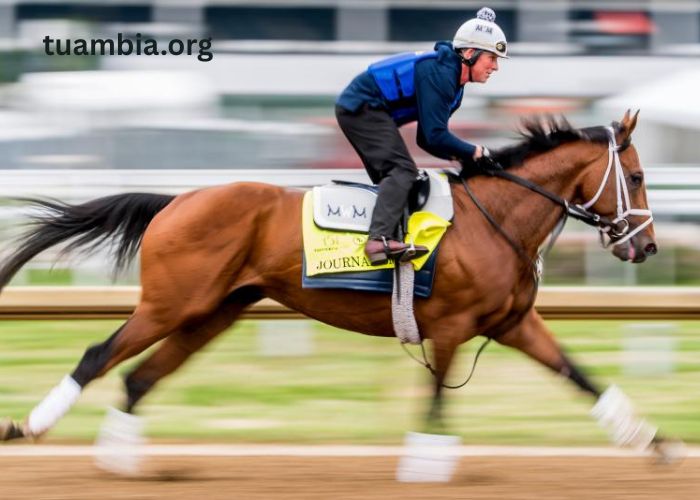The Preakness Stakes is one of the most exciting and historic races in horse racing, attracting spectators and bettors worldwide. As the second jewel in the prestigious Triple Crown, the Preakness Stakes is a high-stakes event that provides plenty of opportunities for those new to betting to get involved.
In this guide, we’ll explore how odds work in the Preakness Stakes and provide essential tips to help you understand and place your bets effectively.
Overview of the 2025 Preakness Stakes
The Preakness Stakes is one of the most well-known horse races in the United States. It is held every year at Pimlico Race Course in Baltimore, Maryland. This year marks the 150th edition of the race, a significant milestone in the event’s long history.
The race will occur on Saturday, May 17th, 2025, with post time scheduled for 6:50 P.M. ET. Coverage will begin on NBC at 2 P.M. ET, offering fans extensive pre-race analysis and insights leading up to the main event.
Understanding the Betting Odds
In horse racing, odds are a critical part of the betting process, representing the probability that a specific horse will win the race. They help determine the likelihood of a horse’s success and the payout a bettor can expect from their wager.
Here’s how you can calculate the payout based on the odds:
- 10-1 Odds: For every $1 you bet, you win $10 in profit, plus your $1 back, resulting in a total payout of $11.
- 5-2 Odds: For every $2 you bet, you win $5 in profit, plus your $2 back, giving you a total payout of $7.
- 3-1 Odds: For every $1 you bet, you win $3 in profit, plus your $1 bet back, leading to a total payout of $4.
Higher odds indicate a higher potential payout but come with greater risk, while lower odds suggest a stronger chance of winning but a smaller return. If you’re looking for a platform to place your bets, sportsbooks like FanDuel provide comprehensive odds for races like the Preakness Stakes, allowing you to compare and choose the best betting options for you easily.
Factors that Affect Preakness Stakes Betting Odds
Several factors can influence the odds of horses in the Preakness Stakes. Here are the most significant ones:
Past Performance and Race Results
Horses with strong finishes in previous races are often favored, while newcomers or those with less impressive records tend to have higher odds (longer payouts). For example, a horse like Journalism performing well in the Derby may have shorter odds going into the Preakness.
Trainer and Jockey Reputation
The experience and success of the horse’s trainer and jockey influence the odds. Well-known trainers with a history of success at the Preakness Stakes, such as Bob Baffert, and accomplished jockeys with a strong track record often make their horses more attractive to bettors, lowering the odds.
Track Conditions and Weather
The condition of the track, whether it’s fast, muddy, or sloppy, can significantly affect how a horse performs. Horses with experience on wet tracks may have a competitive edge if rain falls before the race. Conversely, horses that thrive on fast, dry tracks may increase their odds if the weather is clear. Bettors closely monitor the weather to predict how it might impact the odds.
Betting Trends and Public Perception
The popularity of particular horses can shift the odds. As more money is wagered on a particular horse, its odds can shorten, reflecting public sentiment. Sometimes, bettors follow the crowd, but it’s essential to balance popular trends with objective factors like a horse’s actual form and suitability for the race.
Tips for Betting
Understanding and using the odds effectively is essential for making informed betting decisions, especially during major races like the Preakness Stakes. Here are some tips to help you use the odds to your advantage when placing bets:
Identify the Favorites
The horses with the lowest odds are generally considered the favorites—the most likely to win according to oddsmakers. If you’re looking for safer bets, betting on favorites is reliable, though it often comes with lower returns. For example, a horse with 3-1 odds is favored to win, but your return will be smaller than betting on a longshot.
Look for Value in Longshots
While favorites offer a safer bet, longshots (horses with higher odds, such as 20-1 or 30-1) can offer big payouts. Longshots are riskier, but they can sometimes surprise everyone with an upset win. If you have a hunch or have done thorough research on a horse with high odds, a bet on a longshot can yield significant rewards.
Watch for Changing Odds
Odds can fluctuate leading up to the race depending on various factors, including the amount of money bet on particular horses, injuries, or changes in weather. Monitor these shifts closely, as they can provide insights into which horses are getting more attention from bettors.
Consider Betting on the Place and Show Markets
If you’re less comfortable betting on a horse to win, consider betting on the place (top 2 finish) or show (top 3 finish) markets. These bets are more likely to win than a straight win bet, especially when betting on favorites. However, the payout will be lower. For example, if you bet on a horse to place at 3-1 odds, you’ll get paid out if the horse finishes 1st or 2nd, reducing the risk and lowering the reward.
Use Exacta and Trifecta Bets for Bigger Payouts
For more experienced bettors, Exacta (predicting the 1st and 2nd place finishers) and Trifecta (predicting the top 3 finishers) bets can result in larger payouts. While these bets are harder to win due to the required precision, the payout can be substantial if you predict the correct order of finishers.
Pay attention to horses with complementary running styles. For example, a front-runner paired with a horse known for closing strong could be a good combination for an Exacta or Trifecta bet.
Watch for Public Sentiment
Public sentiment often influences betting odds, particularly horses getting more attention as the race approaches. While popular opinion can sometimes be correct, betting purely based on public perception can lead to overvalued horses.
Watch for overhyped horses where the odds might not entirely reflect their chances. If you notice a horse’s odds shortening just because of popularity, looking for better value elsewhere might be a good idea.
Final Insights for Smarter Betting
As you head into the 150th edition of the Preakness Stakes, remember to keep your bets balanced, stay within your budget, and most importantly, enjoy the excitement of the race. With these insights, you’ll be better equipped to make informed decisions, enhancing your chances of success and making your Preakness betting experience even more enjoyable.






